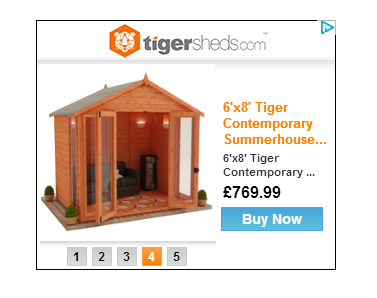 Last week a few of the Search Laboratory PPC team went to Googles Display Network (GDN) event in Leeds city centre. While the GDN has served as an advertising platform for some time, continuous improvements and updated features mean this now offers huge potential for advertisers.
Last week a few of the Search Laboratory PPC team went to Googles Display Network (GDN) event in Leeds city centre. While the GDN has served as an advertising platform for some time, continuous improvements and updated features mean this now offers huge potential for advertisers.
The facts:
- People now spend an average of 4.4 hours a day in front of a screen for leisure purposes.
- 90% of all media interactions are on a screen.
- 5% of time spent on the internet is spent actively searching via search engines.
- The remaining 95% occupied by other activity is almost entirely accessible via the GDN.
- 10% of GDN conversions now come from mobile devices.
- YouTube has a reach of approximately 24 million, while the GDN has a much larger reach of approximately 36 million internet users.
- One-third of the GDN is made up of text only ads.
What should this mean for advertisers?
 Make the most of text
Make the most of text
With a third of the GDN displaying text ads, those adverts that are already being used on the Adwords search network can be easily introduced to larger audiences. However, a separate display campaign should still be created.
Optimise for mobile
With over 60% of the UK population now using smart phones, advertisers need to consider their mobile audience in every aspect of their online campaigns. Mobile display campaigns have different banner specifications so it is important banners are made to meet these criteria.
Now that one in 10 conversions on the GDN is coming from mobile phones there is definitely a case for optimisation of mobile display campaigns. Interactive video ads, ads within mobile apps and click-to-download app ads are just some of the ways successful mobile display campaigns could be achieved.
Dynamic display
It is now possible to tailor display ads to your target audience. Create one display ad and link this with an accounts merchant centre, the ad will change to show an appropriate product from the inventory list, that matches the content on the page. In this way advertisers can show the most relevant products to their audience, making the most of the display placements. Ads can also be shaped to display correct currencies and languages depending on the countries being targeted.
These can be extended further with Dynamic Re-marketing Ads, which can effectively target lost customers. It is possible to show those who have previously visited a site, ads with the products they were browsing.
Engagement ads
Google have introduced various types of engagement ads that allow videos/banners/PDF brochures etc. to populate when a user hovers over an ad for two seconds or longer. The main purpose of these ads is not to generate conversions but to attract new customers and improve brand awareness. The ads are charged on a cost per engagement basis.
The engagement ads come in various forms:
- Hover to play
After hovering over a still image advertisement, a video will be played. All that is required is an initial 300 x 250 still image, a still image to end on and the video for in-between! This can help to enforce other video campaigns on YouTube, an advertisers site or even TV campaigns.
- Standard expendables
Hover over these to generate a larger banner image. Various sizes are available.
- Lightboxes
These are the largest of the engagement ads, allowing an advertisers ad to occupy full screens. There are a number of opportunities available from standard lightboxes which simply allow for a larger banner image to occupy the screen; masthead lightboxes that connect with YouTube channels and also Catalog lightboxes. Catalog lightboxes allow the user to view a PDF brochure and interact with pop up boxes within the catalogue that might share product details or prices. The user is also able to access relevant web pages through these prompts.


